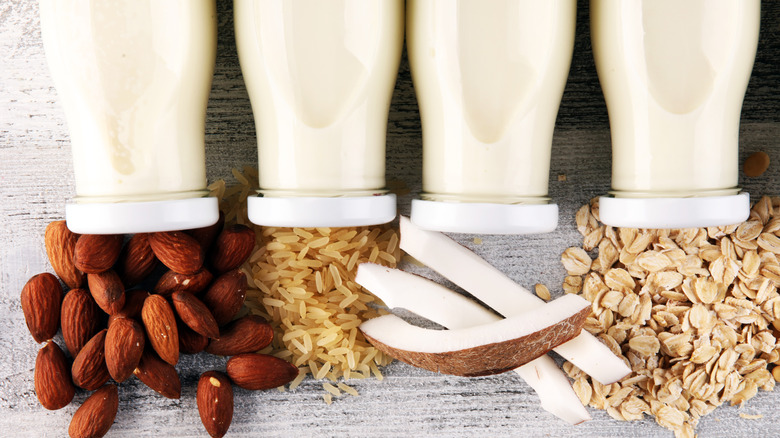Almond Milk Or Oat Milk: Which Dairy-Free Alternative Do People Prefer?
Throughout the 90s and the early aughts, anybody who was anybody donned a milk mustache. In fact, the "Got Milk?" campaign that launched in 1993 to boost milk sales became nothing short of a cultural phenomenon (per Fast Company). With the help of all the biggest names in pop culture, the campaign seemed to work — and is still known as one of the greatest ad campaigns of all time.
Fast forward to 2022, and — as we pull our jackets tighter around our bodies and stroll down the chilly dairy aisle at our local grocery stores — it's hard not to notice the extraordinary transformation that's taken place over the last decade. Alternative, plant-based milks – in all their cardboard-boxed glory — line the shelves in droves. Gone are the days when vegans had to search high and low for one measly soy-based option. Now, one in three people incorporate alternative milk in their weekly menu; for the taste, their health, and the environment (per Morning Consult).
Health Digest conducted a survey asking 612 respondents which dairy-free milk they were most likely to reach for and here's what we found out.
Everybody's nuts for almond milk
The people have spoken, and it turns out everybody's nuts for almond milk! With 53% of the votes, almond milk is the clear favorite amongst respondents. And it's no big surprise, really. According to Beverage Industry, almond milk is also the most popular dairy-free milk on the market, with 40% of Americans adding it to their grocery cart. Oat milk came in a not-so-close second place with about 17% of the votes. However, oat milk might be vying for that top spot in the future, as Beverage Industry data show that oat milk sales jumped about 55% between 2021 and 2022.
Soy milk — the former king of alternative milk — came in third amongst respondents, with nearly 12% of people deeming it their dairy-free crown jewel. Coconut milk followed closely behind, garnering about 10% of the votes. Cashew and macadamia milk were the least popular options, racking up 6% and about 3% of votes, respectively.


